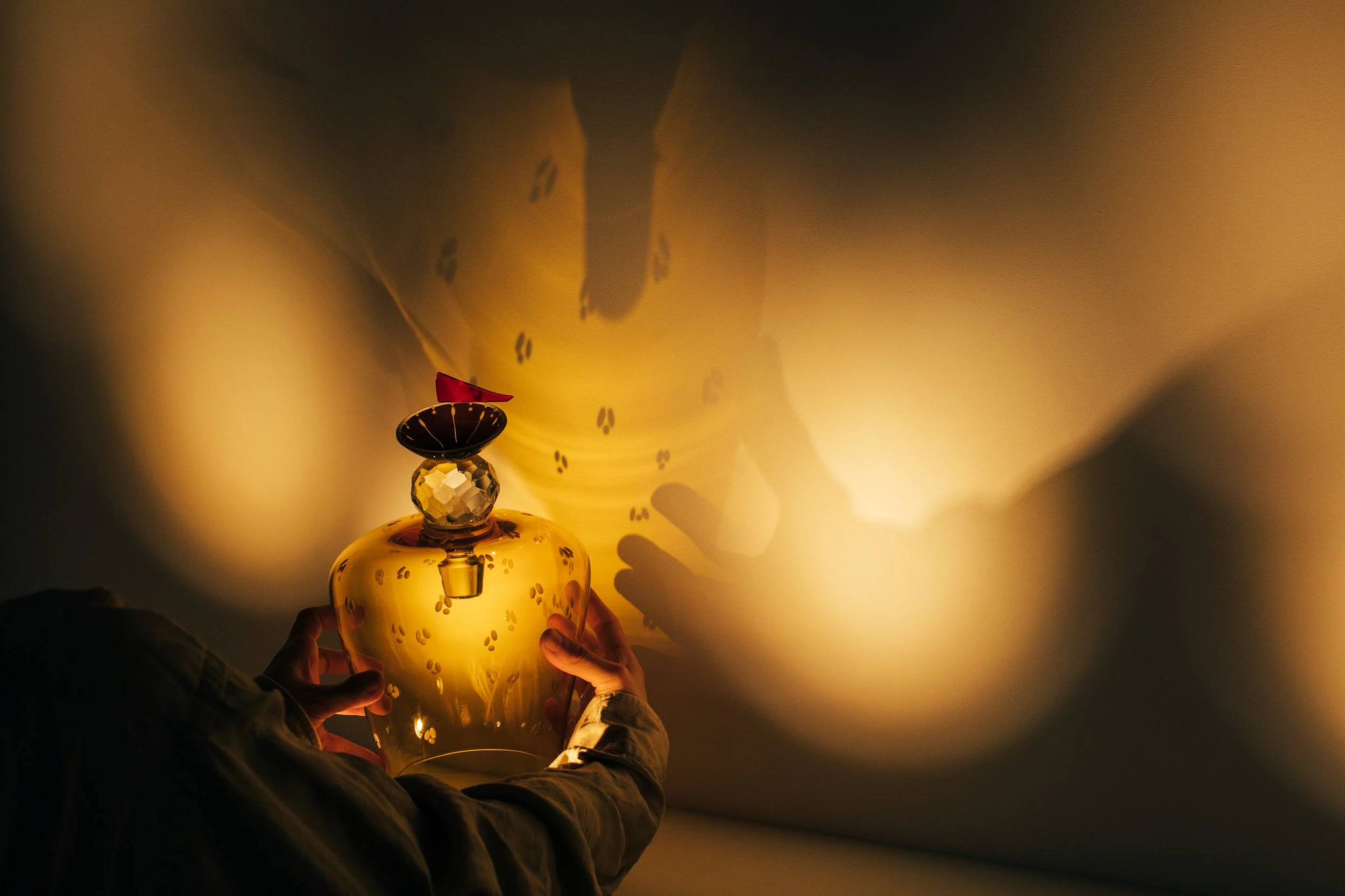OUR COMMON HUMANITY at the Scottish Parliament 2022
By Juli Bolaños-Durman
NHS Lothian Charity Tonic Arts loan to the Scottish Parliament
Project Commissioned by NHS Lothian Charity’s Tonic Arts programme for The Royal Edinburgh Hospital. The artist’s largest installation to date, in partnership with GRAS Architects.
What inspired Our Common Humanity?
'We are part of a great community that supports one another - No matter where we come from, no matter what we have been through.' Juli Bolaños-Durman
One of the main objectives for this commission was engagement with psychiatric patients through art workshops at the Royal Edinburgh Hospital and for these interactions to inform the development and outcome of the art piece.
During the workshops, it was important as a facilitator to get to know the participants and be present. After much observation, what stood out for me, was the importance of the everyday elements of human interaction - The shared exchange; such as a smile and the simple ritual of a cup of tea - This was like a comfort-giving hug in the space, creating moments in which we could all connect and build a support system.
These human exchanges emphasize the importance to all of us, of being heard, supported and embraced.
Our Common Humanity; is a play of glass and light. It is shaped by community engagement with art and highlights the very basic human need of connection.
Our Common Humanity - The making of the work
Every glass piece is brought to life by deconstructing discarded glass, which has been collected and donated by the Royal Edinburgh Hospital Community. I have reconfigured the elements through play and embellished the decadent layers using local heritage hand-cutting techniques. Playing with light brings the beautiful shadows to life whilst manifesting the magic of a second chance. In the end, each piece is a poetic act of rebellion; a resilient rebel that embodies a symbol of hope.
Through my work, I invite the audience to delve into a magical world of second chances, where waste material is the starting point. I create raw pieces that are put together intuitively through the joyfulness of play, exploring different discarded materials from the bin, with ideas to challenge the boundaries of art and its meaning. I’m interested in how this visceral bond between the maker, community and material permeates the creative process, guiding it to become something raw and precious at the same time. These final sculptures and their shadows honour the instinctual need to create something with our hands, and how this act of making, connects us to an unlimited source of joy that brings comfort and elevates.
Most importantly, I want the work to be testimony to our ever-changing journey: powered by trials and errors, vulnerability, and imperfection. Our daily interactions matter and each one of us has the power to make life better; with the support of the people around us and the community we foster.
Bolaños-Durman is known for revitalising waste material by applying various heritage cold-working processes. Her practice is driven by a genuine concern for sustainability and connecting the pressing message of the potential of second chances through the work. This series represents an opportunity to demonstrate both the traditional skills and artistic vision required to breathe new life into discarded objects; inviting people into this imaginary world where everything is possible.
Notes: Juli Bolaños-Durman
Photography: Shannon Tofts & Laura Meek
The lightboxes were designed by GRAS Architects for the artist.
About GRAS Architects:
www.gras.co
GRAS is a Scottish design studio, formed in 2006 as part of the established conservation practice Groves-Raines Architects Ltd.
‘We aim to produce progressive, sustainable and ambitious design solutions through thorough research and the rigorous analysis of any given brief. Our work is driven by an intuitive, yet highly responsive approach rather than a predetermined style and we strive to achieve levels of excellence in all of our work, irrespective of project budget, client or brief. We look to push the boundaries of what is typically understood as architecture, often entering the fields of product design, graphics, audio visuals and art.
We adopt an inventive but reflective attitude to design, always looking forwards but mindful of the past. Working in parallel with conservation experts we understand the significance and value of our built heritage and traditional crafts. We see quality in traditional design, materials and crafts that is often lacking in contemporary buildings: solidity, permanence, proportion, hierarchy, human scale and timelessness and we seek to explore these qualities in our contemporary work. At the same time, we seek to embrace opportunities afforded by emerging technologies, materials and techniques and strongly believe in the value of collaboration with craftsmen, artists and designers.’
Owner of artwork:
Edinburgh & Lothians Health Foundation
Commission information:
Commissioned by Edinburgh & Lothians Health Foundation for The Royal Edinburgh Hospital. The artist’s largest installation to date, in partnership with GRAS Architects.








